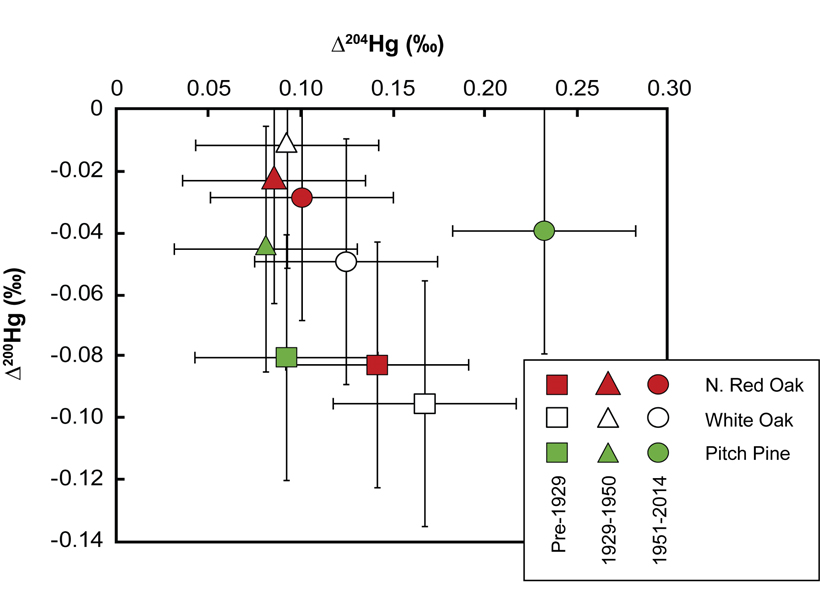Source: Journal of Geophysical Research: Biogeosciences
The annual growth of trees through photosynthesis is demarcated in seasonal growth rings put on in their stems. Rind width and composition provide clues about the conditions under which that individual grew. These “tree rings” have been used for decades to reconstruct past climates and extreme events. However, there is more to the story.
Scanlon et al. [2020] discover that the concentration of mercury in decadal increments can be used to reconstruct atmospheric mercury in a set of trees in Virginia, USA. Using concentration observations, the researchers found that mercury concentrations in tree rings peaked in the 1930s–1950s while global atmospheric mercury continued to rise. Mercury stable isotopes reveal that this local peak was linked to a local pollution source, most likely from a nearby industrial plant that manufactured the synthetic fabric rayon.
This study is the first attempt to analyze and interpret mercury isotopes in tree rings. The findings open the doors to new analytical approaches to tease out the stories hidden in tree rings about the history of human industrial activity and its impact on the biosphere.
Citation: Scanlon, T. M., Riscassi, A. L., Demers, J. D., Camper, T. D., Lee, T. R., & Druckenbrod, D. L. [2020]. Mercury accumulation in tree rings: Observed trends in quantity and isotopic composition in Shenandoah National Park, Virginia. Journal of Geophysical Research: Biogeosciences, 125, e2019JG005445. https://doi.org/10.1029/2019JG005445
—Ankur Rashmikant Desai, Editor, JGR: Biogeosciences
Text © 2020. The authors. CC BY-NC-ND 3.0
Except where otherwise noted, images are subject to copyright. Any reuse without express permission from the copyright owner is prohibited.

